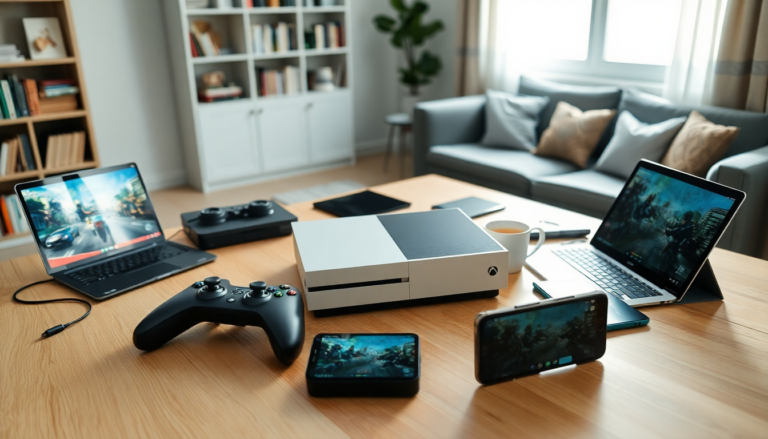Argomenti trattati
The gaming landscape is experiencing a remarkable transformation, and Microsoft’s recent announcements regarding Xbox and its collaboration with Windows are leading the charge. With excitement building in the gaming community about the next generation of Xbox hardware, it’s essential to grasp the broader implications of these developments. Why? Because this isn’t just about new consoles; it signals a profound shift towards a more inclusive and versatile gaming ecosystem that transcends traditional limitations.
Microsoft’s Strategic Focus on Multi-Device Gaming
At a recent presentation, Xbox president Sarah Bond emphasized a critical element of Microsoft’s strategy: integrating Xbox with Windows to create a unified gaming platform. This initiative is designed to ensure that players can dive into their favorite games across various devices without being confined to a single console or storefront. When Bond states, “This is all about building you a gaming platform that’s always with you,” it highlights the company’s pledge to make gaming more accessible and flexible than ever.
As Microsoft navigates the competitive terrain of gaming, the emphasis on cross-platform play is more crucial than ever. The introduction of devices like the Xbox Ally X—a handheld PC that runs Windows and grants access to Xbox Game Pass—exemplifies this strategic direction. Could we be witnessing a future where the lines between consoles and PCs become increasingly blurred? This innovation allows gamers the freedom to choose how and where they play, all while keeping their beloved titles within reach.
This forward-thinking approach is a clear response to the rising demand for versatile gaming solutions. More and more, players are craving the ability to enjoy their gaming experiences on the go. By enhancing the Windows gaming experience, Microsoft is positioning itself as a leader in multi-device gaming, likely attracting a broader audience, including those who have traditionally leaned towards PCs over consoles.
The Implications of a Windows-Centric Gaming Strategy
The recognition from Xbox executives that they’re closely collaborating with the Windows team to establish it as the premier gaming platform raises intriguing questions about the future of Xbox hardware. While fans may be anxious about the fate of traditional consoles, the reality is that Microsoft is reimagining what an Xbox experience can be. By harnessing the power of Windows, the company isn’t just enhancing the gaming experience on handheld devices; it’s also redefining the role of consoles in the gaming ecosystem.
This shift could lead to a more cohesive gaming experience, where devices once seen as separate now operate under a unified framework. With the Xbox Ally X able to play a vast library of games, we may be on the brink of a future where any Windows PC functions effectively as an Xbox, democratizing access to gaming content like never before.
Furthermore, this strategy’s implications extend well beyond hardware alone. By prioritizing Windows as a gaming platform, Microsoft opens doors for collaboration with third-party developers and hardware manufacturers. This could usher in a broader range of devices marketed under the Xbox brand, reminiscent of the vibrant days when PC gaming flourished through diverse hardware ecosystems.
Looking Ahead: The Future of Xbox in a Multi-Platform World
As Microsoft forges ahead with its ambitious plans, the potential for innovation within the gaming sector is vast. The focus on Windows heralds a transformative era where Xbox is more than just a console; it becomes a brand synonymous with gaming across all platforms. What does this mean for gamers and developers? It suggests a landscape evolving toward greater inclusivity and adaptability.
While only time will reveal how these changes will unfold in the coming months and years, one fact is clear: Microsoft is dedicated to redefining the gaming experience. By prioritizing versatility and collaboration, they’re not merely competing with rivals like Sony and Nintendo; they’re setting a new standard for what gaming can achieve in a multi-device world.
In conclusion, as the boundaries between consoles, PCs, and handheld devices continue to blur, the future of Xbox looks set for exciting developments. Whether through enhanced gaming experiences or groundbreaking new devices, Microsoft’s direction signals a more integrated and accessible gaming ecosystem that could redefine how audiences engage with their favorite games.

